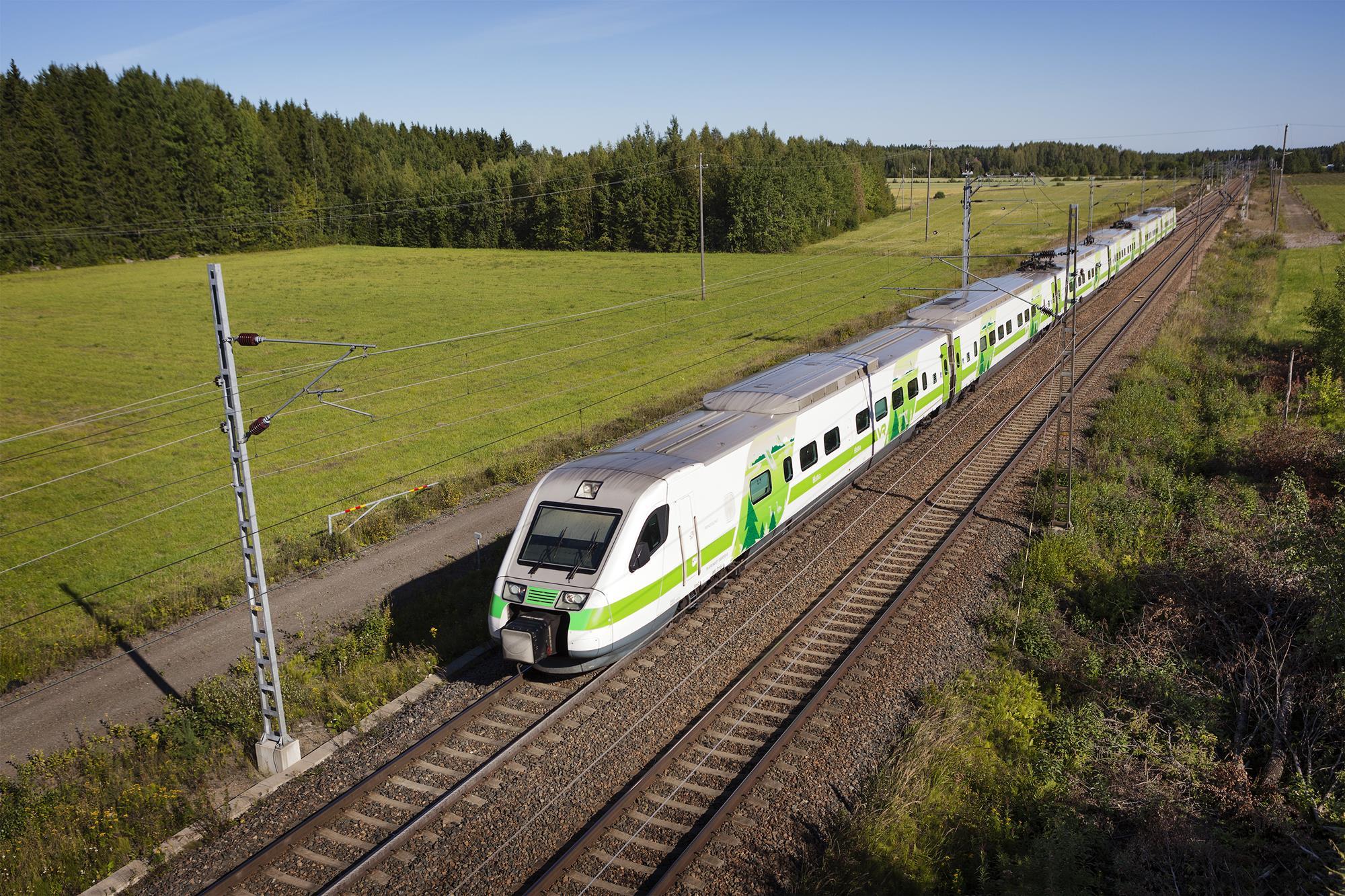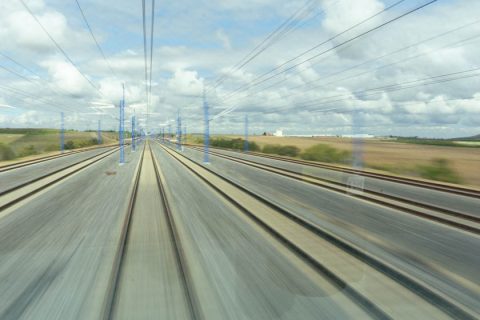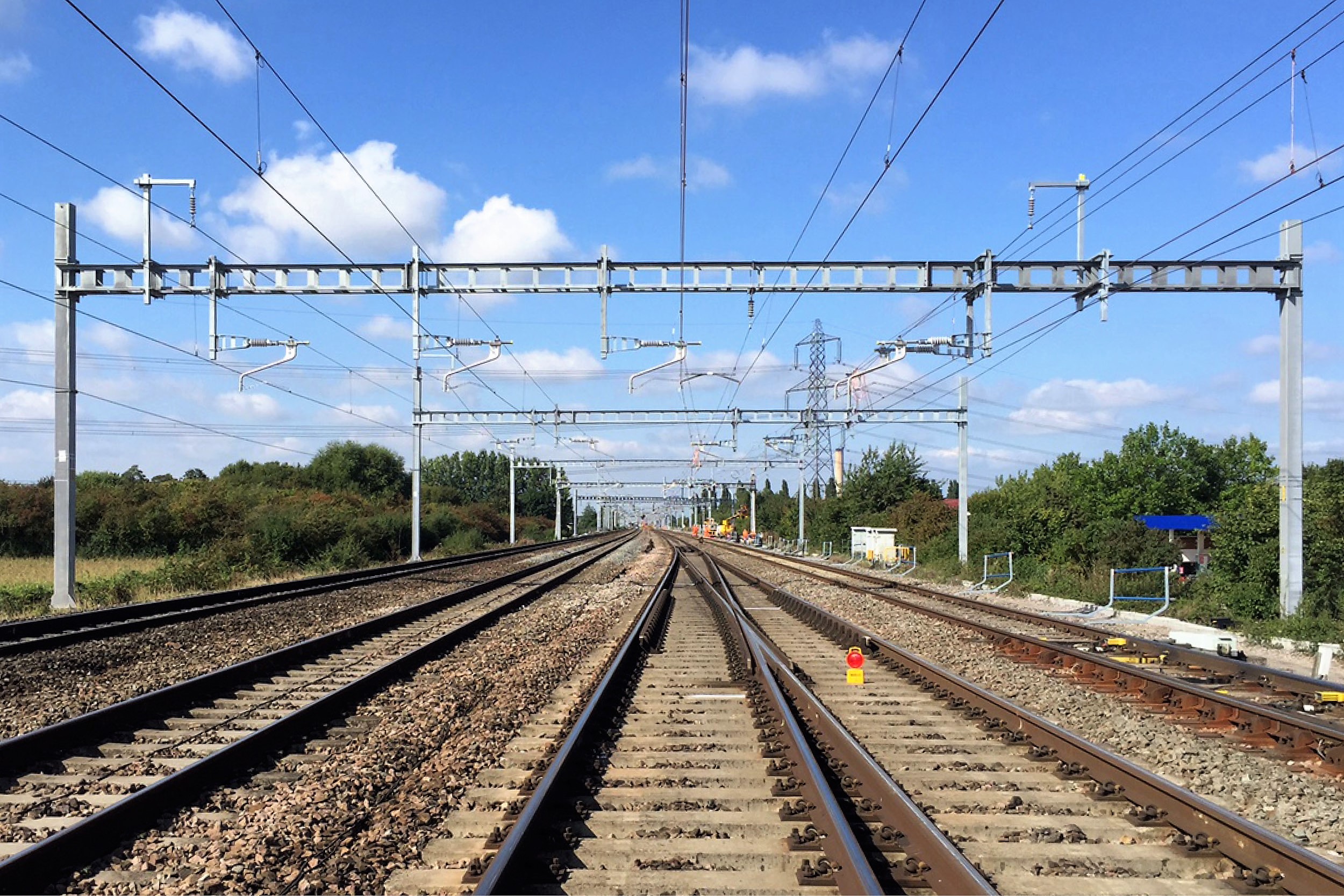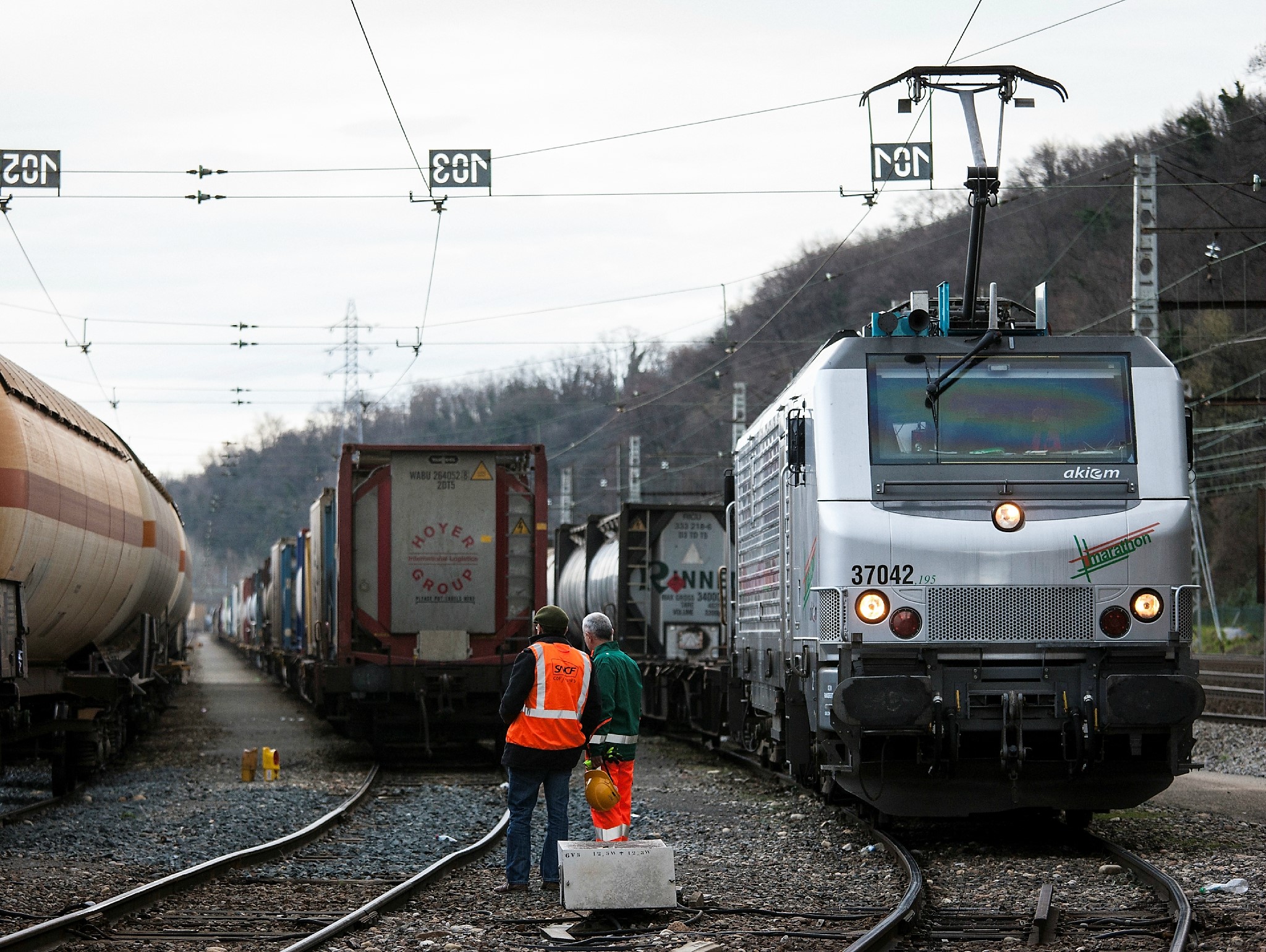16/11/2022 – By Frédéric de Kemmeter – Railway signalling and freelance copywriter – Suscribe my blog
🟧 Back to homepage 🟧 See our brief news 🟧 UK 🟧 China 🟧 Japan 🟧 USA 🟧 the rest of the world
Austria – Baltic States – Czech Republic – Finland – France – Germany – Italy – Netherlands – Norway – Poland – Portugal – Republic of Ireland
– Slovakia – Spain – Sweden – Switzerland – Ukraine
In November 17th, the 6th Business Event for the Mediterranean Corridor will heats up under the slogan ‘Our country can’t wait any longer’. More than 1,500 businessmen will meet at the Barcelona International Convention Centre (CCIB) on 17 November to demand the need to implement the infrastructure. It is therefore important to see what we are talking about with regard to this corridor, as it involves, among other things, the problem of the track gauge.
One of the main objectives pursued by the #IWantCorridor Movement is to work for the completion of the current radial Spain with a circular one in infrastructures in general and in railways in particular, which will better connect the territories and make our country more competitive and prosperous.
A European initiative
Corridors are a planned set of priority transport networks designed to facilitate the communication of people, goods and services throughout the European Union, which were approved in 2011, defined in 2013 and that in 2030 the basic network, a total of 64,572 kilometres, must be completed. The extended core network must also be completed by 2040 and ten years later, in 2050, the Global Network, almost 120,000 kilometres, must be completed.
It is not widely known, but at European level, the Mediterranean corridor was not, until 2011, the official name of a project supported by the European Union. However, since then, and in particular since the definitive adoption of the 9 multimodal corridors of the core network, this corridor has taken on major importance for Spain, as well as for the six other countries concerned. A very active association, Ferrmed, regularly produces studies on the subject.
The « Mediterranean Corridor » is a combination of a Spanish railway project dating back to the 1920s and a project that has been part of the planning of trans-European transport networks since the 1990s. Today, this corridor is both a long-standing Spanish project to link the coastal regions and one of the nine multimodal axes defined by the European Commission in 2013 to form the framework of the core transport network. The fact that the debate on the development of this important coastal axis has now been brought to the European stage provides it with increased funding opportunities and new planning and governance issues. But also prospects for major rail developments.
Although it is a multi-faceted project, we will concentrate here on the rail infrastructure project, whose destination – freight, passenger or mixed traffic running along the Spanish Mediterranean coastline, with a length that can range from the French border to Valencia, Alicante, Murcia, Almeria or Algeciras.

Conversion to UIC gauge?
Coming from France and Barcelone, the Mediterranean Corridor has two branches in the Iberian Peninsula. From Tarragona a branch follows more or less all the coast (or coastal provinces), and the second one moves inwards through Ebro River valley until Zaragoza and from there to Madrid and Andalucia. There are zones with no railway line at all between Murcia and Almeria.
A major problem to date is that this corridor has only one short UIC 1.435mm track line for goods trains between the French border and Barcelona. In Spain, only high-speed lines have been built with the European standard gauge, but this network is centred on Madrid and does not concern freight traffic. To reach Barcelone from France (Perpignan), there is a third rail which was installed on an Iberian track from Figueres Vilafant and which arrives directly in the port of Barcelona, but this infrastructure is still underused. Beyond that, the tracks to Tarragona and Valencia, two major industrial centres, are still on Iberian gauge 1.668mm, which requires costly transhipment of goods from one train to another.
The Tarragona zone is a key area in railway transportation because all traffics coming from Ebro River valley and from interior of Spain together with traffics from Mediterranean Corridor itself converge here. According Ferrmed, the traffic is about 80 trains per day on the section Tarragona – Reus.
Work already underway
The Spanish strongly believe in conversion projects despite the strong implications. According to the Secretary of State for Transport, Isabel Pardo de Vera, the Ministry of Transport (Mitma) has mobilised investments of 4.4 billion euros in the development of the Mediterranean Corridor to finance 300 actions.
The work seems to have reached cruising speed, according to several sources. Of the 717 kilometres of the projected Mediterranean Corridor, a total of 488 kilometres are under development and 229 have been completed.
In Valencia in November 2021, the infrastructure manager Adif issued a public tender for the execution of the work to incorporate this standard UIC gauge on a 2-kilometre section in 2 freight stations in Valencia. The aim of the tender, which amounts to 7.3 million euros, is to carry out the actions necessary for the work to allow the entry of UIC gauge traffic at both stations.

The project, which a priori constitutes a punctual action on the track beach of the two main stations in Valencia, has greater implications for the Mediterranean Corridor, since, as the works specifications state, it will enable the entry of standard gauge trains once « the gauge change works have been completed » on the Castelló and Tarragona section.
Near Valencia, an Adif’s train tests ran over the section between Xàtiva and the La Encina junction, which is key to the development of the Mediterranean Corridor, as the new conventional gauge double-track route will connect the city in standard gauge (1.435mm).
Other projects
The corridor also seems to boost other projects. In particular, there is the project for a rail shuttle for containers and P400 semi-trailers between Algeciras and Zaragoza. Rail & Truck Strait Union, a company formed by Ecorail, Marcotran and Continental Rail (now a subsidiary of CMA-CGM), will not wait for the work to be completed and is planning to open the service in 2024. Rail & Truck Strait Union has obtained a small concession of 11,000 square metres in the port of Algeciras to install a road-rail terminal.
Zaragoza, meanwhile, is becoming a major rail hub and will be undertaking a phase of its second extension, with loading and unloading tracks to operate trains up to 750 metres long and significantly increase container storage space. Work is expected to start in 2023. This terminal already currently handles up to 70 trains per week, almost 3,800 trains per year and has regular connections to the ports of Barcelona, Bilbao and Algeciras.
The accessibility of Algeciras in 1.435mm is another project of the Mediterranean Corridor but will require major works from Valencia. It is this project that the promoters of the corridor want. The president of the Port Authority of Algeciras, Gerardo Landaluce, has requested « the acceleration of the projects that are fundamental at this time and for the opportunities that the Strait of Gibraltar represents ».
The mixed-gauge (UIC or international and Iberian) rail link between the famous Ford plant in Almussafes (Valencia) and the Fuente San Luis terminal will be completed in 2023. This was announced last January by the Minister of Transport Raquel Sánchez, who pointed out that 11.5 million euros will be invested in this link. The minister stressed that this link « will improve the connection between the plant and the port of Valencia, which is important for the automotive sector ».
Spain is making progress, but there are concerns beyond the Pyrenees. The vice-president of the Valencian Association of Entrepreneurs (AVE), Agnès Noguera, has asked the spanish minister for dialogue with France « so that it does its homework, because it is possible that the Spanish section is finished but does not have continuity in the neighbouring country ». 🟧

Related topics:
 The European rail network? A real patchwork of technologies…
The European rail network? A real patchwork of technologies…
02/11/2022 – If you think that railways are just about politics and finance, then you’re in for a real treat. Because railway infrastructure is above all national technology, which is an obstacle to standardisation and the European dream of trains without borders. We will explain all this to you very briefly.
 Spain extends lower rail fees for 2022
Spain extends lower rail fees for 2022
02/12/2021 – In order to mitigate the effects of the crisis caused by Covid-19 on rail transport, Spain extends the reduced track access charges. This was detailed in one of the amendments to the General State Budgets for 2022. In the current context of the health crisis caused by Covid-19, railway activity has been sharply reduced. The current track access charges system limits the independence of…
 Different track gauges in Europe: what are we talking about?
Different track gauges in Europe: what are we talking about?
05/05/2022 – The difference in gauges of Europe’s railways is one of the reasons why it is often misunderstood to mean that there are major differences between all European countries. This is obviously not the case, and this is an opportunity to put things into perspective.
 The optimal length of freight trains
The optimal length of freight trains
29/03/2022 – One of the keys to improving rail freight volumes would be to increase train lengths further. This idea is widespread elsewhere in the world, but in Europe it can only be undertaken under certain technical conditions.
16/11/2022 – By Frédéric de Kemmeter – Railway signalling
Suscribe my blog


Vous devez être connecté pour poster un commentaire.